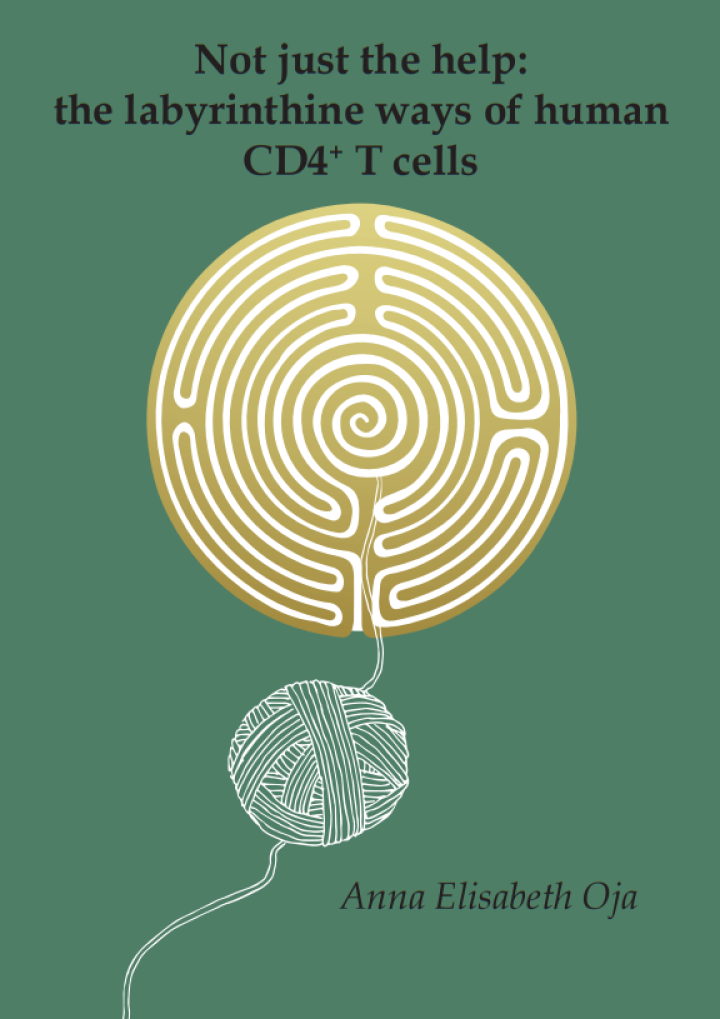Thesis Anna Oja
Summary

Current vaccine strategies and cancer immunotherapies rely heavily on the induction of cytotoxic CD8+ T cells. CD4+ T cell help is required for optimal CD8+ T cell responses. Whether CD4+ T cells have a similar role in human tissues and cancer requires further investigation. In this thesis, we focused on the characterization of less conventional functions of human CD4+ T cells in different tissue compartments and cancer. Transcription factor Hobit identifies cytotoxic CD4+ T cells that arise during primary hCMV infection. We further defined the core signature of human lung CD4+ TRM, which display properties of CD8+ TRM and have a fast and polyfunctional recall response. Lung CD4+ TRM localize in heterogeneous patterns and consist of distinct subsets of TH1 and TH17 TRM, recognizing numerous pathogens. NSCLC tumors also contain polyfunctional pathogen-specific CD4+ TILs with a residency phenotype and PD-1 expression distinguishes functionally distinct subsets. The abundance of CXCL13+CD4+ TILs with a residency phenotype, significantly correlates with survival and frequencies of CD8+ TIL subsets shown to be enriched for tumor-specificity. This suggests that CXCL13+CD4+ TILs are important in anti-tumor immunity and reflect a patient’s ability to form an anti-tumor response. CD4+ TRM are also protective against coronaviruses. SARS-CoV-2 elicits a strong TH1 T cell response. COVID-19 ICU patients develop high antibody titers, but an impaired CD4+ T cell response. Furthermore, BALF of these patients contain T cells resembling circulating cells rather than TRM, suggestive of vascular leakage, altogether indicating misbalanced cellular and humoral responses in patients unable to control SARS-CoV-2 infection. Taken together, our findings shed light on the functionality of CD4+ TRM, which could be targeted in novel vaccine strategies and anti-cancer immunotherapies.
Chapters
Chapter 1
General introduction
Chapter 2
The transcription factor Hobit identifies human cytotoxic CD4+ T cells abstract
Chapter 3
GITR shapes humoral immunity by controlling the balance between follicular T helper cells and regulatory T follicular cells abstract
Chapter 4
Trigger-happy resident memory CD4+ T cells inhabit the human lungs abstract
Chapter 5
Polyfunctional pathogen-specific CD4+ T cells reside in the lungs and tumors of NSCLC patients
Chapter 6
Functional Heterogeneity of CD4+ Tumor-Infiltrating Lymphocytes With a Resident Memory Phenotype in NSCLC abstract
Chapter 7
CXCL13+CD4+ tumor infiltrating lymphocytes at the epicenter of anti-tumor immunity
Chapter 8
Divergent SARS-CoV-2-specific T and B cell responses in severebut not mild COVID-19 patients abstract
Chapter 9
General Discussion: Two sides of the same coin: Protective versus pathogenic CD4+
resident memory T cells
Download
Download PhD thesis (university repository)